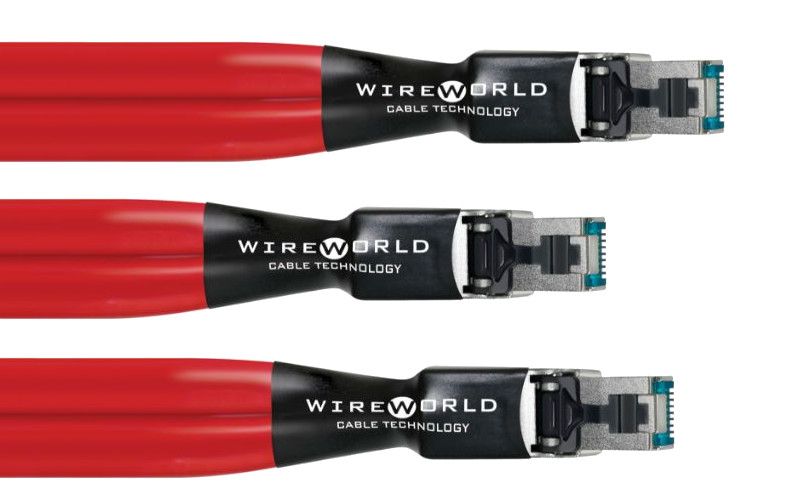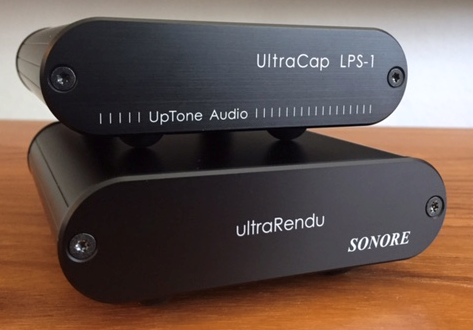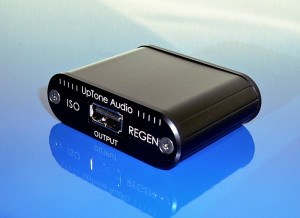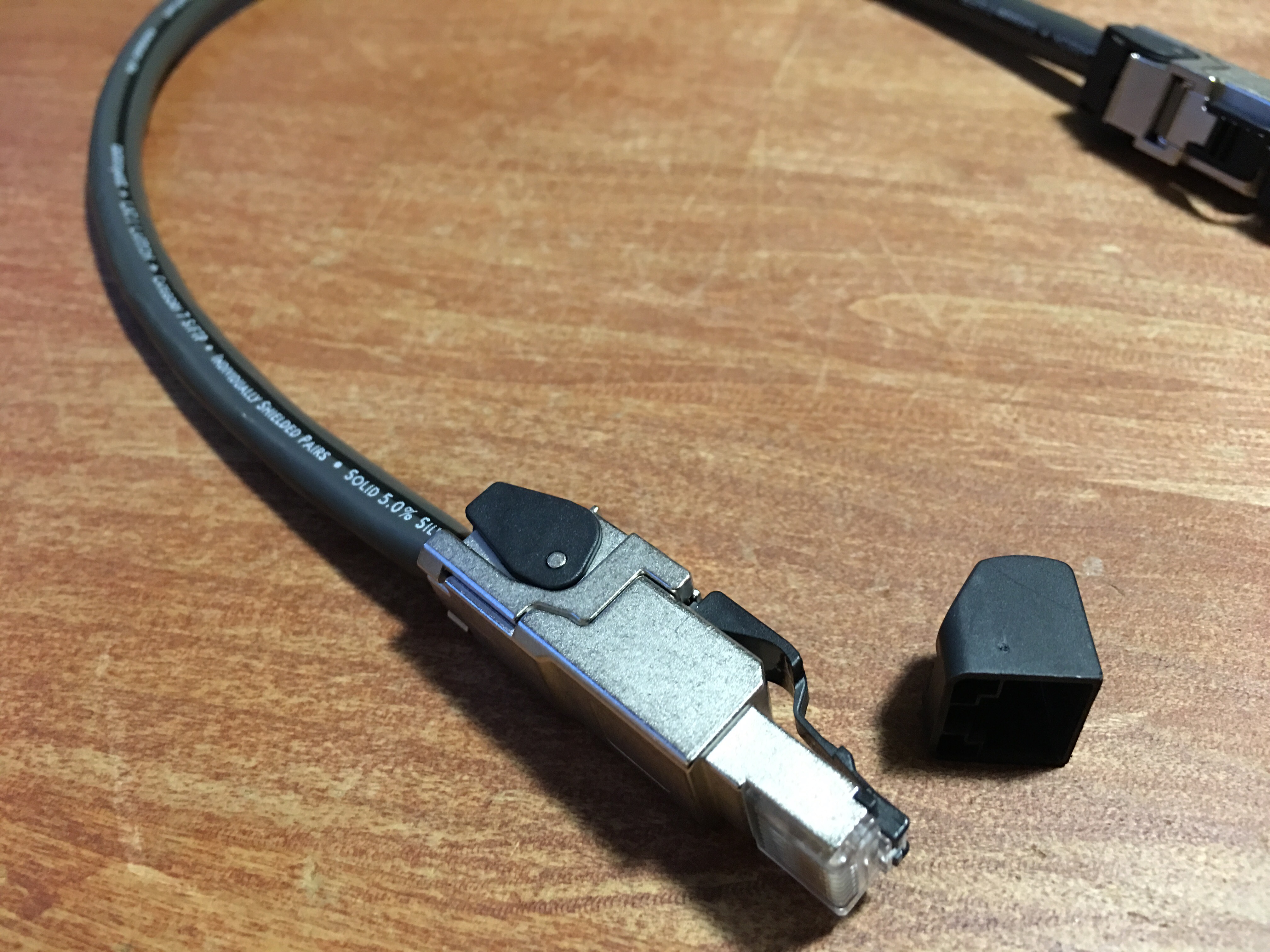Category Archives: News You Can Use
Ethernet Matters 2.0: Wireworld + Sonore + UpTone FTW!
Time and technology keep marching forward. Since the last time I wrote about Ethernet, we’ve seen strong offerings from a number of manufacturers, but the one that stands out the most to me is Wireworld. Most of the hifi vendors are focused on making Cat-6 sound better. David Salz set his sights on an entirely different target: Category 8. Now, if you’re like me, you probably weren’t even aware Category 8 Ethernet cabling had been defined, let alone spec’d out. You also might be wondering what happened to Category 7.
According to Wireworld, every one of their Cat8 cable employs the same “Patent-pending Tite-Shield design technology.” We’ve punched these cables down ourselves, so we can attest to this! Where the three offerings diverge is in the conductors at the heart of the cable: the yellow ‘Chroma’, the red ‘Starlight’, and the top-tier Silver Starlight are all 23AWG and all are terminated identically. The conductive wire is Oxygen Free Copper, Silver-Clad Oxygen Free Copper, and at the top, “Ohno Continuous Cast” 7N (99.99999% pure) Solid Silver. The top cable is described as, “fast and flawless 40 Gbit/sec @ 30 meters” which results in “maximum fidelity.”
This wire has been nothing but aces! The Chroma is an incredibly solid performer, easily a step up from similarly priced offerings from other vendors. It is perfect for long-haul runs from a media server to an audio streamer. The Starlight takes things to the next sonic level and is ideal for “connections on a budget” that weigh in at 2-3 meters. For the shortest patches (0.5-3m) we heartily recommend the Silver Starlight: it provides for some of the best digital audio we’ve ever heard. (By no means are we trying to dissuade anyone from purchasing a 10m run of Silver Starlight — if you have the budget for it, we’ll make it happen!) In short, you can’t really go wrong no matter what your budget is. Every level is a revelation in why Ethernet matters.
When paired with a device like the universally acclaimed Sonore microRendu (see the Audio Bacon review) or their latest offering, the ultraRendu and powered by a quality supply (UpTone has excellent options), you’ll swear digital audio doesn’t get much better than this!
…but then you’ll add something like UpTone Audio’s ISO REGEN — a device which regenerates and removes noise from your USB signal with outstanding results — and think you’ve died and gone to audio heaven. (This sounds like hyperbole, but if you spend a few minutes reading the effusive praise on the Computer Audiophile forums for this little wonder-stack is just unprecedented). The “money” configuration looks something like this:
PC/MAC->Ethernet Cable->Sonore microRendu->UpTone ISO REGEN->DAC
We’re living in exciting times. Digital audio has never sounded better, and it’s crazy to think that it’s getting better all the time!
Ethernet Matters
Coming from a software engineering background, I would usually be the first to tell you — all things being equal — that different (properly terminated, undamaged) Ethernet cables should not make a difference in audio quality.
It would seem that things are not equal, however. A regular customer of mine recently made an unconventional request: a single AudioQuest Carbon Ethernet cable with Telegärtner plugs, 1.5 feet long.
“Just one?” I wondered. They explained that they wanted to try upgrading the final leg of an “optical isolation” run — a method of decoupling the network storage system (NAS, standalone server, etc.) from the playback stage (in their case, a network streamer) while still using “wired” Ethernet. But instead of wires, a pair of optical fibers is used for the majority of the run… With a Tx-to-Fx (copper to fiber-optic) converter at either end and some very short lengths of Cat7(00) Ethernet to make the terminal connections on the wall side and on the player side.
This short run of Carbon would plug into the Streamer. Makes sense when you think about it: The Carbon has excellent shielding, materials, and construction, and after a fiber run done to eliminate noise (EMI/RFI/resonances), you really want to keep it out!
We listened for a couple of hours to the custom solution before making some targeted swaps. We tried reverting to a standard (bulk) Cat7 cable ~25′ and (when listening to the optical solution) also swapping the last leg out for the equally short run of bulk wire the system was using before Carbon.
The “base” optical solution gave a big improvement to the clarity and precision of the presentation beyond what Cat7 could offer alone. If you’ll forgive a digital photography analogy, reverting to straight Cat7 from optical was a bit like someone playing with the “softness” filter in Photoshop. Everything blurred just a little.
Conversely, the AudioQuest Carbon Cat700 cable increase the sharpness even further. If you categorized the improvement that optical isolation offers on a 100 point scale, bulk wire solutions will get you about 85% of the way there. Replacing that last leg of Cat7 with Carbon seems to maximize the effect, revealing even more detail and increasing the sense of focus, articulation, and extension in the upper range.
I also felt the lower registers tightened up a little, adding a small measure of weight and impact. Piano sounded more natural in both the attack and the decay. Peter Gabriel’s naturally sibilant vocal work sounded less like a hot mic and more like he was in the room.
I went into the room a skeptic, but I emerged a believer. The customer said it best: “even [the] last foot and a half of cable can matter.”
Whether you need a single cable or an entire custom cabling solution, give us a call!
News You Can Use: Volume 0
Foundational Tips
- Roy Gregory’s latest tip about “IKEA’s (inadvertent) entry into the [hi-fi] market” is well worth a read. This might also be the highest cost:benefit upgrade your system has ever experienced.
- Got a subwoofer with speaker level input? Using lamp cord to feed it? Well, it turns out that low-level signals really benefit from higher-quality cable! Case in point — we recently were asked to evaluate a set of speakers by a local manufacturer. Nice hardwoods, good build quality. The 2.1 small-room system is based on a diminutive 3″ full-range driver. The modest 8″ subwoofer has an integrated plate amp that features spring clip terminals for its speaker-level input. The terminals are so small, you can’t fit a standard 4mm banana inside them, but a set of these adapters does the job nicely (yes, we know, Radio Shack isn’t known for their audiophile selection, but they work “in a pinch”).
When we replaced the 24awg bulk wire with Nordost White Lightning it really made our ears happy. Nichole Nordeman’s “To Know You” (from Live at the Door) really took on new life. Her voice (which is buttery, airy and oh-so rich) became more three-dimensional and life-like. The presentation of the concert hall captured in the live recording improved dramatically. Instruments seemed more rooted, authoritative and realistic… all by changing out a subwoofer cable!
Hi-res Market
- NativeDSD.com periodically offers free DSD and DXD downloads, along with a free compilation that is useful for comparing different sample rates.
- Fidelio (aka 2xHD) has recently released several new and re-mastered albums in DSD. While HDTracks usually offers some modest PCM versions, DSD is found at ProStudioMasters.com. We’re enjoying these:
- Holly Cole‘s 2007 self-titled release
- Emilie-Claire Barlow: Live In Japan
- For the budget-conscious and the quality-obsessed alike, we have observed that ProStudioMasters.com is often cheaper than HDTracks.com at the same resolutions and often offers higher resolutions (such as the DSD versions of several of Holly Cole’s albums). For example, compare Doug MacLeod’s “There’s a Time” in 24/176:
- $23.99 at ProStudioMasters
- $29.98 at HDTracks
- Of course, both sites are currently having a Labor Day sale:
- HDtracks has a 10% off code: HDAUG25 that expires TODAY.
- ProStudioMasters has a 10% off code that expires September 3rd.
Vinyl Market
- Elusive Disc has lots of great Vinyl on sale now. They’re also having a site-wide 10% off sale + Free Shipping on orders over $99! (This discount stacks with current sale prices!)
- Beatles‘ fans: The Beatles are coming (back to Mono)! New, pure analog transfers that Michael Fremer regards quite highly. Bound to sell out quickly.
- Dire Straits fans: Universal’s latest Dire Straits collection is very good. They even restored the original album art. We would have liked to see a gatefold cover, but at the end of the day it’s the music that matters, and they’ve done a fabulous job.
- Lorde fans: her Pure Heroine album sounds really good on vinyl. It was either derived from a different master than the digital version, or at least has far better dynamic range, and it really shows when listening to the two back to back.
CD Market
- FIM’s DECCA: Supreme Stereophonic Legacy by Winston Ma is out. Not only is it a beautiful set and valuable for history of music buffs, the CDs are among the best sounding CDs we’ve ever heard.




